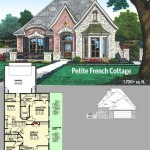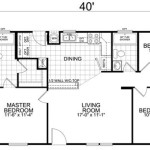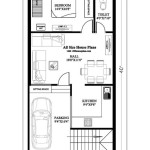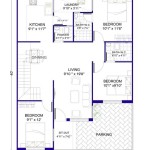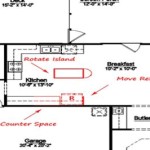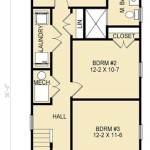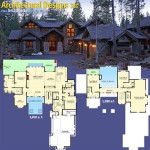Coastal House Plans With Elevators: Accessibility and Luxury Converge
Coastal living evokes images of serene ocean views, refreshing sea breezes, and a relaxed lifestyle. However, for individuals with mobility challenges or those planning for long-term aging-in-place, navigating multi-story coastal homes can present significant obstacles. Coastal house plans with elevators offer a solution, seamlessly blending the allure of waterfront property with the practicality of universal accessibility. This article will explore the benefits, design considerations, and available options for incorporating elevators into coastal home construction, ensuring both aesthetic appeal and functional convenience.
The integration of elevators into coastal house plans is a growing trend, driven by an aging population, increasing awareness of accessibility needs, and advancements in elevator technology. No longer a luxury reserved for the wealthy, residential elevators have become more affordable and customizable, making them a viable option for a wider range of homeowners. They provide a comfortable and safe means of vertical transportation, eliminating the strain of stairs and enhancing the overall livability of a coastal residence.
Benefits of Elevators in Coastal Homes
The advantages of incorporating an elevator into a coastal home extend far beyond simple convenience. They address a range of practical and lifestyle considerations, significantly improving the quality of life for residents and their guests.
Firstly, elevators provide enhanced accessibility for individuals with mobility limitations. Whether due to age, injury, or disability, stairs can pose a significant barrier to accessing different levels of a home. An elevator eliminates this barrier, allowing residents to fully enjoy all areas of their property. This is particularly important in coastal homes, which often feature multiple levels to maximize views and accommodate larger living spaces.
Secondly, elevators offer increased convenience and ease of living for all residents. Transporting groceries, luggage, or other heavy items between floors can be physically demanding. An elevator simplifies these tasks, reducing strain and effort. This is especially beneficial for homeowners who entertain frequently or have guests who may have difficulty navigating stairs. The ease of moving items throughout the house contributes to a more relaxed and enjoyable coastal living experience.
Thirdly, elevators can significantly enhance the resale value of a coastal home. As the population ages, the demand for accessible housing is steadily increasing. A home with an elevator is a highly attractive feature for potential buyers who are seeking long-term living solutions or who anticipate the need for accessibility in the future. The investment in an elevator can therefore provide a substantial return upon resale, making it a worthwhile upgrade for many homeowners. Moreover, it could expand the range of potential buyers, reaching those who would otherwise not consider a multi-story home.
Finally, an elevator provides peace of mind for homeowners planning for the future. As individuals age, their physical abilities may decline, making it increasingly difficult to navigate stairs. Installing an elevator allows homeowners to age in place comfortably and safely, without the need to relocate to a single-story dwelling. This provides a sense of security and independence, allowing residents to remain in their beloved coastal homes for years to come. The ability to maintain independence and stay in a familiar environment is a significant benefit for many seniors.
Design Considerations for Coastal House Plans with Elevators
Integrating an elevator into a coastal house plan requires careful consideration of various design factors to ensure seamless integration with the overall aesthetic and functionality of the home.
Determining the appropriate elevator size and capacity is a crucial first step. The dimensions of the elevator cab should be sufficient to accommodate wheelchairs or mobility devices, as well as multiple passengers. The load capacity should also be adequate to handle heavy items, such as furniture or luggage. A professional elevator installer can provide guidance on selecting the appropriate size and capacity based on the specific needs of the homeowner.
Choosing an elevator location that is both accessible and aesthetically pleasing is also important. The elevator should be situated in a central location within the home, with easy access from all levels. Considerations should be given to proximity to main living areas, bedrooms, and entryways. The elevator shaft can be integrated seamlessly into the architectural design, either as a prominent feature or concealed within a closet or hallway. The design should complement the overall style of the home, enhancing rather than detracting from its aesthetic appeal.
Selecting appropriate elevator finishes and materials is also important to maintain the coastal aesthetic. The elevator cab can be customized with a variety of finishes, such as wood paneling, stainless steel, or glass. The materials should be durable and resistant to moisture, given the coastal environment. Coastal themed décor may also be incorporated, such as nautical accents or sea-inspired artwork, to further enhance the aesthetic appeal.
Ensuring compliance with all relevant building codes and regulations is essential. Elevator installations are subject to strict safety standards and accessibility requirements. It is important to work with a qualified architect or contractor who is familiar with these regulations to ensure that the elevator meets all necessary requirements. Regular maintenance and inspections are also necessary to ensure the continued safety and reliability of the elevator system. Failure to comply with regulations can result in costly delays and potential safety hazards.
Soundproofing around the elevator shaft is yet another consideration. Minimizing noise transmission from the elevator mechanism to surrounding living spaces is important, especially in bedrooms or quiet areas. Soundproofing materials can be incorporated into the walls and floors surrounding the elevator shaft to reduce noise levels. Proper insulation and vibration dampening can significantly improve the acoustic comfort of the home.
Types of Elevators Suitable for Coastal Homes
Several types of elevators are suitable for residential use in coastal homes, each with its own advantages and disadvantages. Selecting the right type depends on factors such as space constraints, budget, and desired level of customization.
Hydraulic elevators are a traditional option, using a hydraulic piston to lift and lower the elevator cab. They are known for their reliability and smooth operation. However, they require a machine room to house the hydraulic equipment, which can take up valuable space. They also tend to be slower than other elevator types. Hydraulic elevators are generally more affordable than traction elevators, making them a popular choice for budget-conscious homeowners.
Traction elevators utilize a system of cables and counterweights to move the elevator cab. They are faster and more energy-efficient than hydraulic elevators, and they do not require a machine room. However, they typically cost more to install. Traction elevators are a good option for homes with limited space or for homeowners who prioritize speed and energy efficiency. They also offer a smoother and quieter ride compared to hydraulic systems.
Pneumatic elevators, also known as vacuum elevators, use air pressure to lift and lower the elevator cab. They are self-contained units that require minimal installation and no machine room. Pneumatic elevators are known for their space-saving design and ease of installation. However, they have a limited weight capacity and may not be suitable for larger families or for transporting heavy items. They also tend to be more expensive than hydraulic or traction elevators. Their futuristic design can be a stylistic advantage for modern coastal homes.
Finally, through-the-floor elevators are a compact and affordable option for homeowners with limited space. These elevators travel through an opening in the floor, providing access to the floor above. They are relatively easy to install and do not require a dedicated elevator shaft. However, they have a limited weight capacity and travel distance, and they may not be suitable for all homes. Through-the-floor elevators are a practical solution for providing basic accessibility between two floors.
Regardless of the type selected, adherence to safety regulations, regular maintenance, and professional installation are crucial for ensuring the longevity and safe operation of the elevator. Consulting with experienced elevator professionals is highly recommended to determine the best elevator solution for a specific coastal home.

Shelter Cottage Piling Foundation With Elevator 2466 Sf Southern Cottages

Coastal Stilt House Plan With Elevator And Second Level Living Space 765044twn Architectural Designs Plans

House Plans Floor With Elevator For Builders

Two Story 4 Bedroom Southern Home With Elevator And Second Floor Balconies Plan Balcony House Plans Florida

Elevated Piling And Stilt House Plans Coastal From Home

Floor Plans House With Elevators

Coastal House Plans Beach From Sdc

Plan 44164td Elevated Cottage House With Elevator Coastal Plans Beach Beautiful Houses

Coastal House Plans Beach From Sdc

Elevated Piling And Stilt House Plans Coastal From Home

